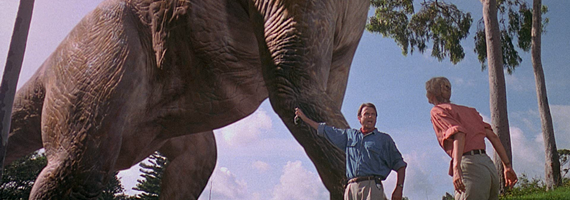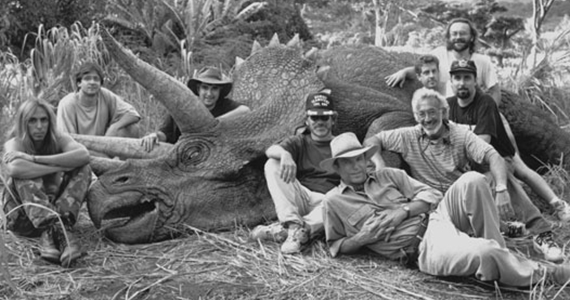
Often times, after I finish watching a film, I spend a bunch of time online looking at message boards and reading reviews, trying to see what other people thought of the movie. But if a film contains some noteworthy special effects, chances are I’m nerding out doing fx research and scouring youtube. The technical aspects of a film and what goes into that process, anything from the camera work to the makeup, has consistently been my favorite thing to dissect in movies. In this series I explore that passion and break down key effects work. This month I tackled one of the greatest effects driven films of all time, Jurassic Park.
WHAT’S THE 411?
The ‘411’ is that Jurassic Park boasts some of the absolute, if not the best special effects ever put to screen. For what it’s worth, I still think it’s the greatest display of animatronics and CGI effects work ever created. The film achieved such a high bar of success in effects work that it still tops almost everything made since its release 19 years ago.
WHO’S BEHIND THE FX?
A team of talented special effects artists came together on the film to produce results on a massive scale. The key players included Stan Winston (animatronics,) Phil Tippett (visual effects from ILM studios,) Michael Lantieri (on-set effects supervisor,) and Dennis Muren (digital compositing.) Director Steven Spielberg also hired Paleontologist Jack Horner to help guide the design of the dinosaurs.

NOTABLE EXAMPLES:
This is really difficult to narrow down because the movie is crawling with fantastic examples. Below are some key scenes where the anamatironics and visual effects took center stage.
“Welcome to Jurassic Park” is obviously our introduction to the dinosaurs in the film. The movie doesn’t take long to get to this intro and when it hits the audience it certainly packs a punch. The animals are vast and awe inspiring. The CGI visuals create a landscape that feels completely real to the audience.
“The Sick Triceratops”
This is one of the first scenes with an animatronic dinosaur and in it the actors are able to act right alongside the creature. There is something to be said about the fact that this scene takes place in the brightness of day. There are no shadows or shade available to mask the visual effects and the creature still looks realistic. The dino is in fact stunningly lifelike and that lends to the viewer an idea of what’s to come throughout the rest of the film.
“Tyrannosaurus Rex”
Here is the big daddy. If you weren’t a believer before, I bet you are now. In one of film’s most icon scenes, the terrifying T-rex rears its ugly head and shows us one of the most convincing monsters to ever hit the big screen.
“Flocking Dinos”
ILM produces CGI dinos for this action sequence. The effectiveness of the scene lies in the creation of realistic movement for the animals.
“Raptors in the Kitchen”
Again, here we see both animatronics and CGI working hand in hand to create fully formed cinematic magic.
BEHIND THE SCENES:
Jurassic Park has the benefit of having tons of amazing behind the scenes videos and photos. Here’s a few interesting videos showing how the filmmakers where able to pull off a lot of the movie’s biggest visuals.
THE T-REX: Here you see footage from rehersal that shows off the serious size and scope of the T-Rex.
RAPTORS: This vid shows some of the work that went into creating some of the raptor puppets featured in the movie.
FEATURETTE: This is a nice ILM behind the scenes video that goes through everything from early stop motion tests to fully formed computer generated images.
ADDITIONAL READING: There is a lengthy post about the effects work that went into a scene with a dino and the Nedry character that I wouldn’t do any justice quoting. Read the entire thing at the Stan Winston School blog.
ADDITIONAL VIEWING: This is unrelated to effects work in particular but if you’d like to see more behind the scenes of JP, this video shows Speilberg and the cast durion various stages of filming. You can watch it here on Youtube.

